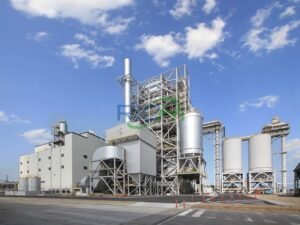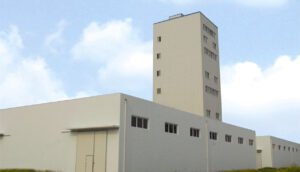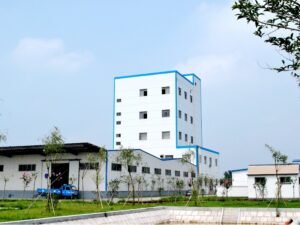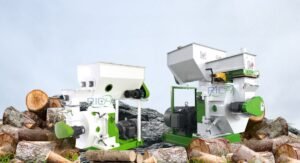
In the ever-evolving world of agriculture and animal husbandry, the demand for efficient and tailored solutions in feed production has never been higher. Cattle feed pellet machines play a crucial role in this industry, and a common question among farmers and feed manufacturers is whether these machines support customized configurations. This article explores the customization options available for cattle feed pellet machines and their implications for feed production.
The Need for Customization
Cattle feed requirements can vary significantly based on several factors:
- Breed of cattle
- Age and growth stage of the animals
- Purpose (dairy or beef production)
- Local climate and environmental conditions
- Available raw materials
- Scale of operation
Given these variables, a one-size-fits-all approach to feed pellet production is often inadequate. This is where the ability to customize cattle feed pellet machines becomes crucial.
Customization Options in Cattle Feed Pellet Machines
Modern cattle feed pellet machines do indeed support a wide range of customization options. These include:
- Production Capacity
Manufacturers offer machines with varying production capacities, typically ranging from 500 kg to 20 tons per hour. This allows farmers and feed producers to choose a machine that matches their specific production needs. - Die and Roller Configuration
The die and roller assembly is the heart of the pellet machine. Customization options include:
- Die hole size: Typically ranging from 2mm to 12mm, allowing for different pellet sizes
- Die thickness: Affects pellet density and durability
- Number of rollers: More rollers can increase production efficiency
- Power Source
Machines can be customized to run on different power sources:
- Electric motors (most common)
- Diesel engines (for areas with unreliable electricity supply)
- PTO (Power Take-Off) driven for tractor-operated models
- Feeding System
Customizable feeding systems can include:
- Automatic feeders with adjustable feed rates
- Specialized hoppers for different types of raw materials
- Pre-conditioning units for better pellet quality
- Cooling and Drying Systems
Depending on the feed formulation and local climate, different cooling and drying systems can be integrated:
- Horizontal coolers
- Vertical coolers
- Fluid bed coolers for more delicate feed formulations
- Control Systems
Modern cattle feed pellet machines can be equipped with advanced control systems:
- PLC (Programmable Logic Controller) systems for automated operation
- Touch screen interfaces for easy monitoring and adjustment
- Remote monitoring and control capabilities
- Material Handling Equipment
Customized material handling equipment can be integrated:
- Conveyors (screw, belt, or bucket elevators)
- Mixers for blending different feed ingredients
- Storage silos with varying capacities
- Safety Features
Customizable safety features may include:
- Emergency stop buttons
- Overload protection systems
- Dust collection systems
Benefits of Customization
The ability to customize cattle feed pellet machines offers several advantages:
- Optimized Production: Tailored machines can produce feed that precisely meets the nutritional requirements of specific cattle breeds or growth stages.
- Improved Efficiency: Customized configurations can lead to better energy efficiency and reduced waste in the production process.
- Scalability: As operations grow, modular designs allow for easier upgrades and expansions.
- Better Quality Control: Customized control systems enable more precise monitoring and adjustment of the pelletizing process.
- Adaptability to Local Conditions: Machines can be configured to work optimally with locally available raw materials and under specific environmental conditions.
- Cost-Effectiveness: While customized machines may have a higher initial cost, they often prove more cost-effective in the long run due to improved efficiency and reduced waste.
Considerations for Customization
When considering a customized cattle feed pellet machine, it’s important to:
- Assess Current and Future Needs: Consider not just current production requirements but also potential future expansion.
- Analyze Raw Materials: Ensure the machine is optimized for the types of raw materials you plan to use.
- Consider Maintenance and Support: Customized machines may require specialized maintenance. Ensure that proper support is available.
- Evaluate ROI: Calculate the return on investment, considering both the initial cost and long-term operational benefits.
- Consult with Experts: Work closely with manufacturers or agricultural consultants to determine the best configuration for your specific needs.
Conclusion
Cattle feed pellet machines do indeed support a high degree of customization, allowing farmers and feed manufacturers to tailor their equipment to specific needs and conditions. From production capacity and die configurations to control systems and safety features, nearly every aspect of these machines can be customized.This flexibility in design and functionality enables producers to optimize their feed production process, improve efficiency, and produce high-quality feed tailored to the specific needs of their cattle.
As the livestock industry continues to evolve, the ability to customize feed production equipment will play an increasingly important role in meeting the diverse and changing needs of cattle farmers worldwide.While customization offers numerous benefits, it’s crucial to carefully consider all factors and consult with experts to ensure that the chosen configuration aligns with both current needs and future goals.
With the right customized setup, a cattle feed pellet machine can become a valuable asset in enhancing feed quality, improving operational efficiency, and ultimately contributing to the overall success of cattle farming operations.
Related post: Cattle Feed Production Line






